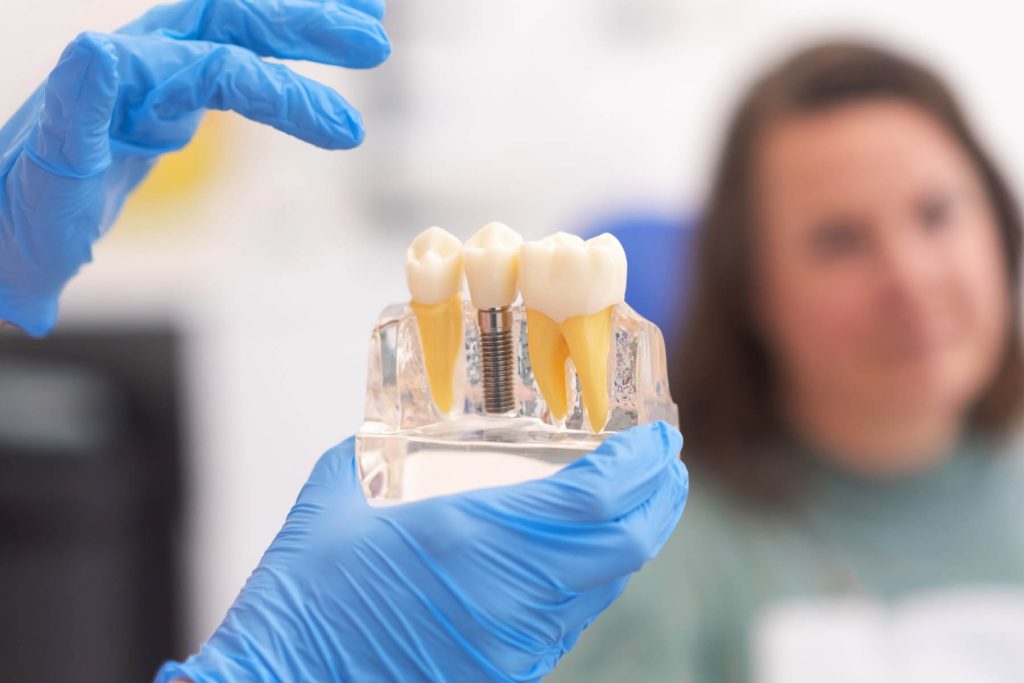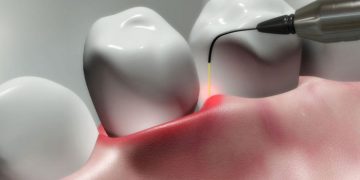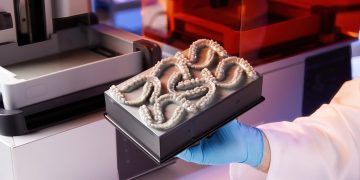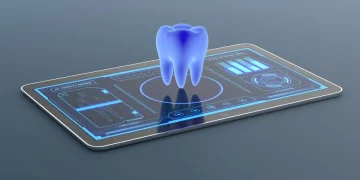Dental implants have become one of the most successful and widely used solutions for replacing missing teeth. Over the years, dental implant technology has evolved, leading to significant improvements in treatment success rates, patient comfort, and long-term outcomes. In recent years, there have been several groundbreaking advancements in implant materials, surgical techniques, digital technology, and patient care, which have collectively raised the standard for dental implantology.
This article explores the latest developments in dental implant technology and how these innovations are improving treatment outcomes.
What Are Dental Implants?
Dental implants are artificial tooth roots that are surgically placed into the jawbone to support a replacement tooth or bridge. The implant is typically made of titanium or other biocompatible materials, which allow it to fuse with the bone in a process called osseointegration. This fusion provides a stable and durable base for artificial teeth, making implants a preferred option over traditional dentures or bridges for many patients.
Despite their success, traditional dental implants have limitations, particularly in terms of the surgery itself, healing time, and long-term maintenance. However, with the rapid advancements in technology, many of these challenges are being overcome.
1. Improved Implant Materials
One of the most significant areas of advancement in dental implant technology is the development of advanced materials. Dental implant success depends heavily on the ability of the implant to integrate with the bone (osseointegration), which is why the materials used for implants must be both strong and biocompatible. Some of the latest materials include:
a. Titanium and Titanium Alloys
Titanium has been the most commonly used material for dental implants for several decades due to its excellent biocompatibility and strength. However, newer titanium alloys have improved the performance of dental implants. These alloys are designed to enhance the osseointegration process, reduce the risk of implant failure, and improve the overall longevity of the implant.
b. Zirconia Implants
Zirconia, a ceramic material, is gaining popularity as an alternative to titanium. Unlike titanium, zirconia implants are tooth-colored, making them an ideal option for patients who are concerned about the aesthetic appearance of their implants. Zirconia implants are also highly biocompatible and offer strength and durability comparable to titanium. While zirconia implants are still relatively new, they are gaining favor for both cosmetic and functional reasons, particularly in the anterior (front) regions of the mouth.
c. Bioactive Coatings
In addition to advanced materials like titanium and zirconia, researchers have developed bioactive coatings for implants. These coatings encourage faster and more reliable osseointegration by enhancing the bond between the implant and the bone. Materials like hydroxyapatite, a naturally occurring mineral form of calcium phosphate found in bone, are commonly used to coat dental implants, promoting better healing and integration with the jawbone.
2. Computer-Assisted Implant Surgery
Digital technology has drastically changed the way dental implant surgeries are planned and performed. With computer-assisted techniques, dentists can now perform highly accurate, minimally invasive implant procedures. The key advancements include:
a. 3D Imaging and CBCT Scans
Cone Beam Computed Tomography (CBCT) is a type of 3D imaging that allows dental professionals to view a highly detailed and accurate representation of a patient’s oral anatomy, including the bone structure. CBCT scans provide critical information about bone density, nerve locations, and other anatomical features that are essential for successful implant placement. This imaging allows for a more precise treatment plan and can help identify potential issues before the surgery begins.
b. Virtual Implant Planning and Simulation
Computer-aided design (CAD) software enables dentists to virtually plan the implant placement in 3D. Using the information from CBCT scans, the dentist can simulate the entire surgical procedure before performing it. This virtual planning not only improves the accuracy of implant placement but also helps avoid potential complications, such as nerve damage or sinus perforation.
c. Guided Implant Surgery
Guided implant surgery is another significant advancement in implantology. With the help of 3D planning and computer-generated surgical guides, dentists can place implants with incredible precision. These guides are custom-made based on the patient’s unique anatomy and are used during the surgery to direct the dentist’s hand to the correct position. Guided surgery reduces the need for incisions, minimizing trauma to surrounding tissues and improving healing times.
3. Immediate Loading and Same-Day Implants
In the past, patients who received dental implants had to wait for months before their permanent crowns were placed due to the osseointegration process. However, recent advancements in implant materials and techniques have made immediate loading and same-day implants a viable option for many patients.
a. Immediate Implant Placement
With immediate implant placement, a dental implant can be inserted and a temporary crown can be attached to the implant in the same appointment. This procedure is especially beneficial for patients who have lost a tooth due to trauma or extraction. The implant is placed into the fresh extraction site, and a temporary restoration is placed on top. This method reduces the need for multiple appointments and allows patients to enjoy a functional and aesthetic solution more quickly.
b. Immediate Loading Implants
In some cases, patients can even receive a permanent restoration on their implant on the same day of the surgery. This process, known as immediate loading, is possible thanks to advances in implant design, materials, and the patient’s bone density. Immediate loading can drastically reduce treatment time and provide patients with a fully functional tooth almost instantly. However, this technique is not suitable for all patients, and a careful evaluation of the patient’s bone health is essential to ensure successful outcomes.

4. Bone Regeneration and Grafting Techniques
Bone loss can be a significant challenge in dental implant surgery, particularly in patients who have had missing teeth for an extended period. Fortunately, advances in bone regeneration techniques have helped make dental implants viable for a broader range of patients.
a. Bone Grafting
Bone grafting procedures, such as the use of synthetic bone materials or bone harvested from other parts of the patient’s body, are now routinely used to augment insufficient bone volume. This helps create a solid foundation for the dental implant to be placed securely. In recent years, newer bone graft materials and techniques, such as the use of growth factors, have enhanced the effectiveness of grafting procedures, leading to better outcomes and faster healing.
b. Sinus Lift Surgery
For patients in the upper jaw who have insufficient bone in the posterior region (the back of the mouth), a sinus lift procedure can be performed. This procedure raises the sinus membrane and adds bone grafting material into the space to provide a stable base for implant placement. Modern sinus lift procedures, supported by advanced imaging techniques, have improved in terms of precision, safety, and healing time.
c. Growth Factors and Stem Cell Therapy
Emerging techniques involving growth factors and stem cells are being researched to improve bone regeneration. For example, platelet-rich plasma (PRP) and platelet-rich fibrin (PRF) have been shown to promote bone healing and improve the success rates of implant procedures. Additionally, stem cell therapy holds the potential for regenerating bone tissue, reducing the need for traditional grafting.
5. Enhanced Patient Care and Post-Surgery Monitoring
With advances in technology, post-operative care and monitoring have also seen improvements. Digital tools and apps are now available to help patients track their healing progress, receive reminders about medication or follow-up appointments, and communicate directly with their dental professionals. These technologies improve patient outcomes by ensuring adherence to aftercare instructions and helping to detect any issues early.
Additionally, dental professionals are utilizing more advanced pain management techniques, such as minimally invasive surgical tools, to minimize post-operative discomfort and speed up recovery times.
6. Long-Term Success and Predictability
One of the most significant improvements in dental implant technology is the increased predictability and long-term success of the procedure. Modern materials, improved surgical techniques, and digital planning tools allow dental professionals to achieve a high level of precision, reducing complications and failures. Studies show that the long-term success rate of dental implants has improved significantly, with success rates now approaching 98%.
Conclusion
The latest advancements in dental implant technology have significantly improved treatment outcomes, making dental implants more accessible, effective, and predictable. From innovative materials such as zirconia and bioactive coatings to the use of 3D imaging and guided surgery, these technological advancements have enhanced the precision of implant placement, reduced healing times, and improved overall patient satisfaction.
With these improvements, dental implants have become a more viable and reliable option for patients seeking to restore missing teeth. As the field of dental implantology continues to evolve, we can expect even more innovations in materials, techniques, and patient care that will further improve the results of implant treatments and increase their long-term success.













































Discussion about this post